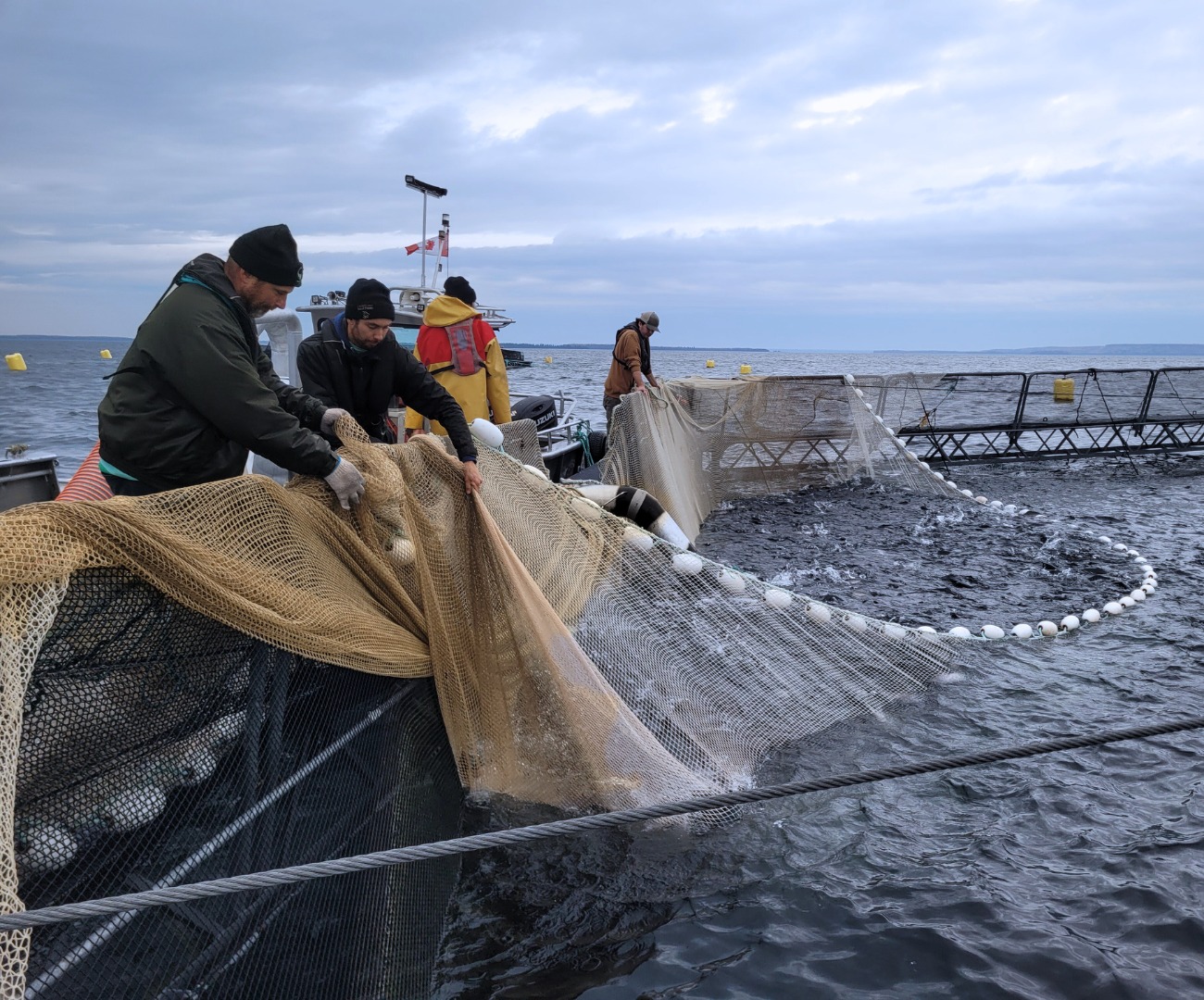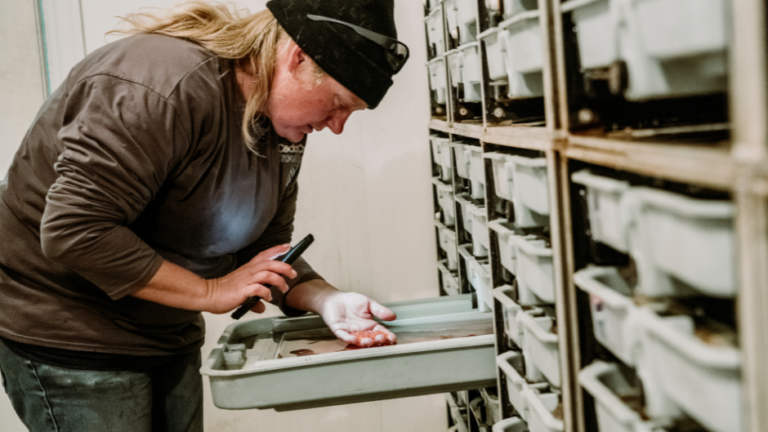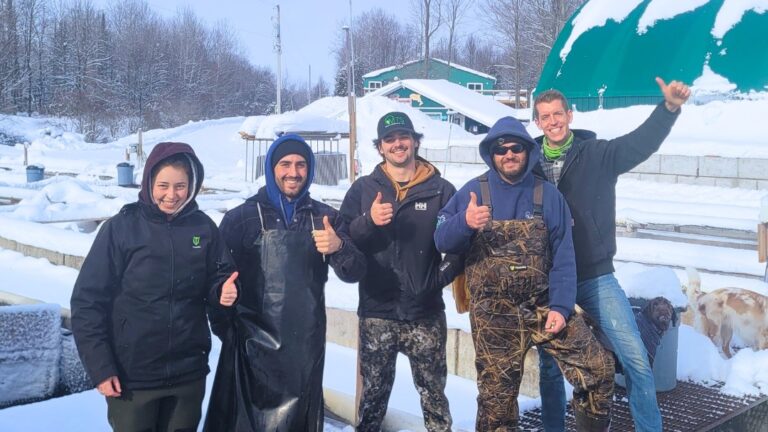
There’s been some bad stories lately about high death rates on fish farms, so we wanted to explore the issue with what we at Springhills know.
As any farmer will tell you, where there’s livestock there is deadstock. No matter what kind of animals you raise, even if you do everything right, some of them will perish.
From egg hatch to harvest, we lose an average of 8% of our fish. That’s about the same as other farm animals, and a whole lot better than wild trout or salmon where 99% don’t make it to adulthood!
The last 12 months have been very ideal for growing fish, so we’re trending far below that (knock on wood!). We lost less than 3% of the trout we just harvested on Manitoulin Island.
When we do lose fish, it’s often in the first few months of their life. It’s similar to what happens in the wild. The weaker ones can’t compete and the strongest survive.
As they get older, we only lose big numbers if there is an accident or disease. Both are rare.
An accident could be a failed pump or a blocked pipe. When our farm started 30 years ago, we saw more accidents as we learned all the kinks. But we understand the ins and outs of our sites now, so accidents are unusual.
Fish dying from disease is rare and random, but it does happen. If fish get sick, we don’t usually blame the pathogen, we blame poor husbandry, bad nutrition, or any sort of stress. We focus on preventing disease with things like low densities, gentle handling, and natural products, which can help avoid any health mishaps.
Avoiding fish stress is probably the single largest thing we focus on to limit mortalities. It can be difficult when we start seeing higher temperatures and erratic storms (ah hem, climate change), but adjust feeding regimes, oxygenation and water flow to mitigate.
And what happens to any dead fish? We compost them, and our father grows a very health field of squash and tomatoes every year!


